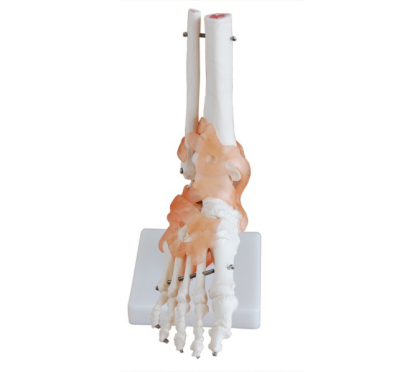As an important part of human body, the stability and flexibility of foot joint depend on complex ligament structure. In order to understand this structure more deeply, we can observe and analyze it in detail through the foot joint model.

Foot joint model is an important teaching and research tool in the fields of medicine, biomechanics and sports science. These models are often made precisely based on real human anatomy so that we can visually see structures such as the bones, joint capsules and ligaments of the foot joint.
In the foot joint model, ligaments are a crucial component. They act like tough ropes that hold the bones together tightly, providing the necessary stability and support for the joints. The strength and elasticity of the ligaments ensure that the foot joints are not susceptible to injury when bearing the weight and impact of motion.
There are many kinds of ligament structures in the foot joint model, and each ligament has its specific function and position. For example, the anterior talofibular ligament is an important tissue that prevents the talus from moving forward, and its rupture can cause instability in the ankle joint. The deltoid ligament, on the other hand, is a complex located on the medial side of the ankle joint, consisting of multiple ligamentous fiber bundles, whose physiological function is to maintain the normal anatomical position of the talus.
Through the foot joint model, we can clearly see the shape, position and direction of these ligaments. We can observe how they are attached to the bone and the role they play in joint movement. This intuitive way of learning helps us gain a deeper understanding of the function and importance of ligaments in the foot joint.
In addition to teaching and research, foot joint model is also widely used in medical rehabilitation and sports training. Doctors can use these models to assess a patient's foot joint injury and develop a personalized treatment plan. Athletes and coaches can use these models to learn and master correct sports skills and reduce the risk of sports injuries.
In conclusion, the ligament structure in the foot joint model is a complex and important component. By gaining a deeper understanding of the shape, position, and function of these ligaments, we can better understand the anatomy and functional mechanisms of the foot joint. It is of great significance to the fields of medical education, biomechanics research, sports science and medical rehabilitation.
